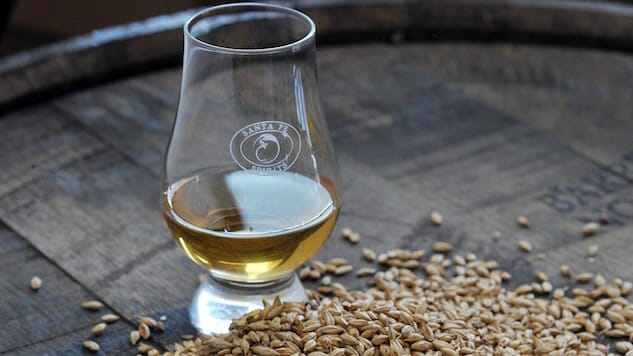5 American Single Malts You Need to Drink Now
Photo via Santa Fe Spirits
All you need to do is check the booze publications, and you’ll see the revival of American malt whiskey widely touted as the “next big thing.” Driving the malt whiskey momentum is that the spirit, as a category, was and still is largely ignored by big distillers, leaving an open field for the crafty little guys to stake a claim. Many have, and their efforts are now starting to achieve critical mass.
Those who love bourbon, but are averse to scotch, should note that American malts can offer quite a contrast to Scottish and even Irish whiskies, due to differences in law and tradition. Scottish and Irish single malts are made from 100% malted barley in copper pot stills, and most often aged in used casks, usually former bourbon, sherry or port casks.
American malts need only have 51% or more malted barley in their mash bill. It’s certainly possible under federal law to make a 100% malt whiskey, but many use other grains and thereby bring in other flavors. Likewise, there is no requirement in the U.S. for malt whiskeys to be made using copper pot stills, and the use of a column still combined with the variable grain recipe could produce a new make spirit closer to what the Scots and Irish call a grain whiskey than malt whiskey. Finally, and perhaps most important, American malts are aged, at least in part, in charred, new oak barrels.
One last distinction is the term “single malt.” As applied to an American malt, it means the same thing as it would for one of its Scottish relatives: all the whiskey comes from a single distillery and it was made from a 100% malted barley mash bill.
These five American whiskeys, all not just American malts but single malts as well, are the best examples of what is out there today.
Balcones 1 Texas Single Malt Whisky

Balcones is one of the best established small distilleries in the country, and their Texas Single Malt is their flagship. Starting with the use of a high-quality barley variety (abandoned for the thrifty Scots for the most part, due to cost) and slow fermentation, the whisky then relies on multiple rounds of blending and barreling. That is a labor-intensive process, but one that allows the distillery to infuse plenty of flavor.
-

-

-

-

-

-

-

-

-

-

-

-

-

-

-

-

-

-

-

-

-

-

-

-

-

-

-

-

-

-

-

-

-

-

-

-

-

-

-

-












































